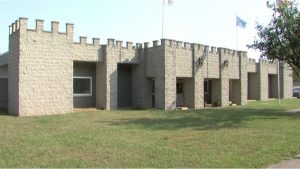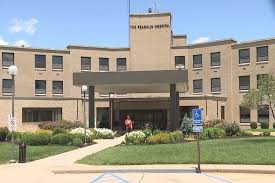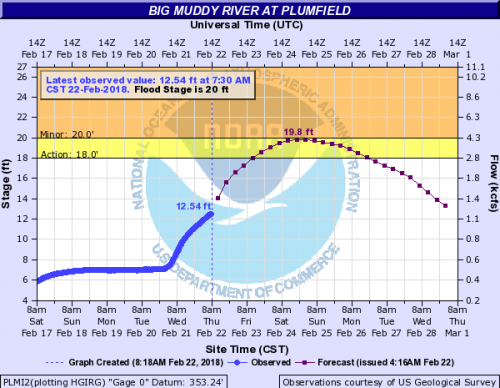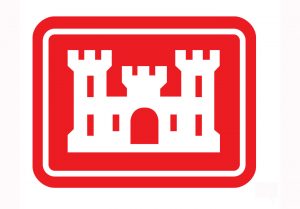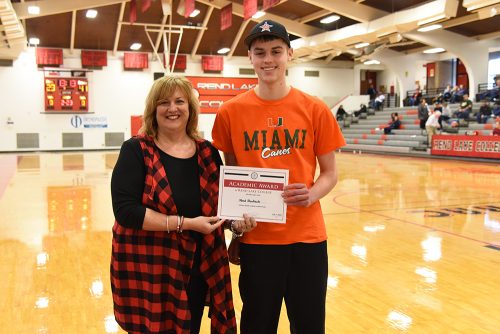SWANSEA, IL – The U.S. Office of Surface Mining Reclamation and Enforcement (OSMRE) has approved a nearly $1.9 million Abandoned Mine Land (AML) project to protect more than 450 middle school children in Swansea.
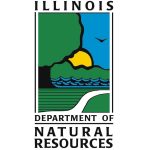 The award comes five months after the ground beneath Wolf Branch Middle School dropped nearly 25 inches when the old underground mine workings collapsed, resulting in extensive structural damage to the school building. The building is temporarily shut down and the 450 children have been moved to a nearby school until the situation can be mitigated.
The award comes five months after the ground beneath Wolf Branch Middle School dropped nearly 25 inches when the old underground mine workings collapsed, resulting in extensive structural damage to the school building. The building is temporarily shut down and the 450 children have been moved to a nearby school until the situation can be mitigated.
Federal and state mining officials and the Wolf Branch School District have combined their resources and are working together to stabilize the hollow ground beneath the school and to restore it so the site can once again provide a safe environment for the community’s children to learn and grow. Work will be managed by the Illinois Department of Natural Resources (IDNR) AML Emergency Program.
Project Background
Built in 2002 at a cost of $16 million, the Wolf Branch Middle School has a current enrollment of 450 students.
While the Wolf Branch Middle School building has been closed for safety reasons, the IDNR AML Emergency Program, with assistance from OSMRE’s Alton Field Division, has been conducting a drilling program to determine subsurface mine conditions in order to develop stabilization plans. The AML Phase I Emergency drilling project was completed earlier this year at a cost of $288,374. Structural engineers were also called upon to inspect the structure and identify additional safety concerns to the contorted building.
AML Backfill Project and School Rebuilding
Historical data and research on the area shows that the Wolf Branch Middle School property overlies the abandoned Summit Coal Mine, which operated from 1894 to 1940. The depth to the coal seam is 185 feet, and the mined-out thickness is 6 feet. The AML Phase II Emergency backfilling project to be conducted on the school site will protect the undamaged portion of the building by preventing the mine beneath it from collapsing. In addition, it will stop the active ground movements that are continuing to cause damage to the east half of the school.
It is anticipated that the pumping of grouting material into the abandoned mine will start in mid-April and be completed early this summer at a cost of $1.9 million. Once the IDNR AML Emergency Program can stop the subsidence through grouting, the site can be used safely.
The Wolf Branch School District plans to rebuild the damaged portions of the building using school district funds. The heavily damaged portion of the building will be removed in a cost sharing venture between the IDNR AML Program and school district and addressed as a mine land reclamation project.
“The Illinois Department of Natural Resources is proud to be working with our federal partners at the OSMRE and the Wolf Branch School District on this important public safety project,” said Tom Benner, director of the IDNR Office of Mines and Minerals. “The effective coordination among state, federal and the local authorities is paramount to the success of this project. The efficient leveraging of available funds will allow the school building to reopen and, most importantly, to ensure a safe place for the children to learn.”
“The school district is extremely appreciative of the resources provided by the IDNR and the OSMRE,” said Wolf Branch School District superintendent Scott Harres. “The onsite expertise and funding assistance made possible through the AML Program have been vital in allowing the district to take the necessary steps to safely house our grades 5 through 8 students at the Wolf Branch Middle School as soon as possible.”
The Impacts Caused by AML Subsidence in Illinois
The AML Program was created by the U.S. Congress in 1977 as part of the Surface Mining Control and Reclamation Act (SMCRA) in order to both protect the public and to restore environmentally damaged lands associated with legacy coal mining activities. Of particular importance in Illinois are the abandoned underground coal mines that cause subsidence. In the 53 coal-producing counties of Illinois, there are 252 public schools that are undermined and at risk of subsidence. To date, at least 16 Illinois schools have been damaged by unplanned coal mine subsidence events over abandoned room and pillar mines.
In addition to schools, the IDNR AML program has documented subsidence related damages to more than 2,000 homes, as well as numerous commercial buildings and bridges, since the creation of the AML Program under SMCRA. Many of the subsidence cases have caused life-threatening damages requiring extensive structural shoring and adjustable bracing systems – projects which had to be implemented swiftly to keep portions of the structures safe for occupancy.
The AML Program is funded by fees levied on current coal mine operations that are used to keep the public and environment safe from past coal mining activities. OSMRE approves each AML Emergency Project and its funding. Funding for the AML program is scheduled to end in 2021, unless extended by the U.S. Congress.



